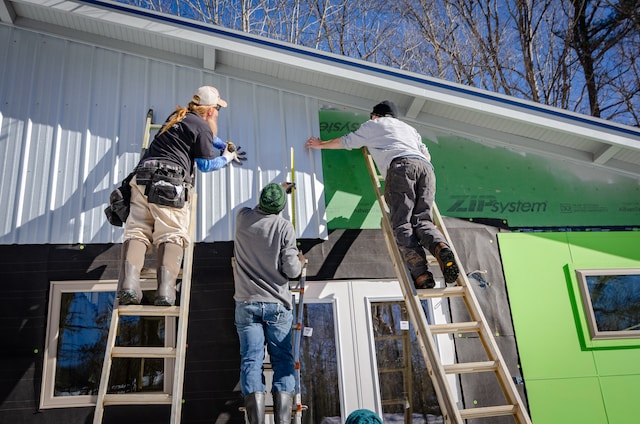Labelling, in general, makes everything easier; as a kid, whenever I didn’t have labelling stickers, I used packing tapes to make labels for my books and notebooks. Not only was it easier for me to identify which notebooks belonged to which subject, but it also helped to put my name on the textbooks. As childish as this might sound, this concept applies to much bigger fields as well. The purpose of labels is to communicate to others what the object is or what purpose it’s supposed to serve. In a complex scenario like a newly constructed building, labelling certain things can work wonders, and here is the reason why.
Are Labels Worth The Hassle?
First of all, it’s important to remember that you don’t have to spend a fortune to add labels as a part of your building plan. It’s not even necessary to have “professional” labels, at least not right away – you can always use custom packing tape as an alternative until you can get good quality labels (which are durable and clearly printed).
Second, you have to think about how increasingly intricate the operating systems running within a building are becoming. The operating system of a building is to run a multitude of projects. These include central heating and cooling systems, the lighting and networking system (for internet and television services). Additionally, in smart establishments, an AI (artificial intelligence) is used to control certain parts of the system or even to interact and work with the people inhabiting the building. We also can’t leave out the elaborate security system that includes all the cameras and electronic locks.
So, the overall complexity of operating systems designed nowadays has made the use of labels even more necessary, as it will help navigate and simplify the maintenance and repair work for contractors.
Where do The Labels Come In?
The exact placement of labels around your building should be decided in the initial stages of construction. This means it should be included within your construction plan and specifications. Here is a more elaborate explanation for your better understanding.
Whenever a building is to be constructed, you need both a plan and a bunch of specifications. The plan is usually the part that tells you what you are planning to build. The specifications can be treated as a set of instructions – how you should be building the establishment, and what will be needed in order to achieve the desired result? Now, the labelling falls into the specifications part (hence the title). These labels will help make future amendments to the system a lot easier since they will lead the technicians directly to the source of the problem. This will certainly help save time and effort.
Additionally, cutting off the wrong wires, getting injured by hazardous objects while on a maintenance job aren’t uncommon. This situation leads to long term damages not only to the building’s operating system but also to the technicians and electricians themselves. So labelling appliances, wires or other objects properly will keep people out of danger.
What Are The Things That Should Be Labelled?
Wires supplying electricity or the wire related to telecommunication such as the phone or internet lines should be labelled. Nobody in today’s day and age can survive too long with either of those lines disrupted, and if this happens at an office building, it would cause havoc.t
The contractors should mainly focus on labelling things that are specific to the building. These include patch panels (a wire hub, or simply a type of hardware that helps organize the internet cables), or the faceplates of all the switchboards.
Next, all power outlets, electrical connections and panels should be labelled.
If you happen to have solar panels or generator control systems, labelling those would be a good idea too.
Last but not least, make sure you have safety labels in particularly dangerous areas like the boiler room or the generator room. Security and smart system panels should also be carefully labelled to avoid confusion.
Is Quality Important for Labels?
As with everything you invest in, the quality of labels is also an important factor to consider.
When you’re purchasing your labels, make sure to check the quality of the material that is used to make the labels. You want something that will be long lasting – in terms of both retaining the information printed on them, and without breaking or tearing.
Even if your labelling material is good, you still have to think of ways to further prolong its life. Laminating the labels will help to make it last longer, shielding it from extreme temperatures, dirt, oil or even harmful chemicals.
What Should Labels Look Like?
This might sound like a weird question to ask – but it’s very valid, I can assure you that. Naturally, labels are meant to be conspicuous, otherwise, it would defy the purpose of being an indicator.
Make sure your labels are of very bright colour, preferably white, yellow, red or lime green. The prints on them should also be obvious. Avoid putting in too many words. In most cases, a simple image will do. If you’re worried about anyone not understanding the illustrations, you can always have a small guide pinned on the walls on each floor or in the area where the systems are supposed to be.
Of course, the above does not apply to faceplates or power outlets – you will have to go for much simpler options for those, or just colour code the different outlets.
Size also matters! Sometimes labels are so small they are barely visible. The size depends mainly on the object you will be labelling; for example, the labelling for a fuse box will be different from that of an electrical outlet. One would obviously be larger than the other. Therefore, remember to size the printable labels appropriately.







